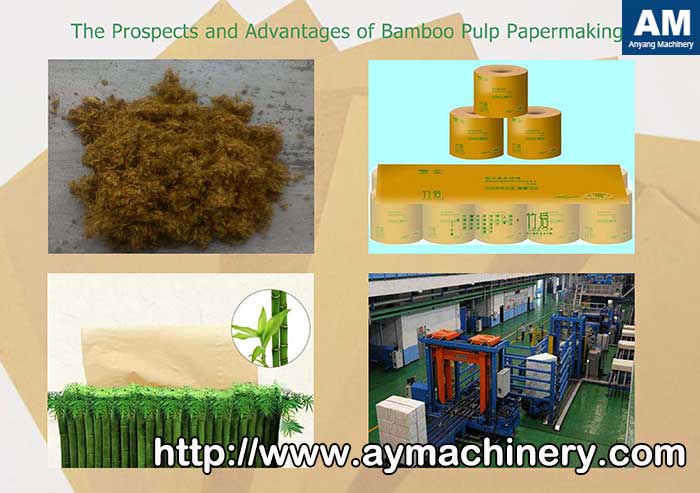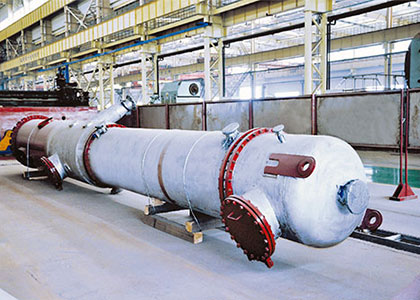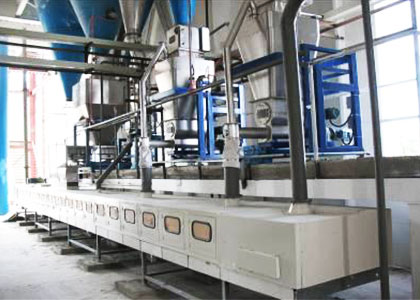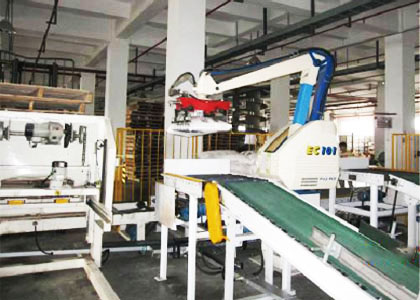The Prospects of Bamboo Paper Pulp Manufacturing
The development potential of bamboo pulp papermaking is greatly huge. Bamboo fiber is slender and an important raw materials for paper pulp manufacturing besides wood. The performance of bamboo pulp lies between softwood pulp and hardwood pulp. It is obviously better than straw pulp. The bamboo pulp is able to be matched to use with wood pulp or straw pulp with reasonable production. Due to its cheapness, it can be used to produce culture paper, living paper and packaging paper. Because of the characteristics of fast growth, short cycle, renewable and sustainable use, we can breed high quality and high yield of bamboo, adopt the advanced production technology and establish forestry & paper integrated bamboo paper pulp making production base.

According to related reports, India, Bangladesh, Thailand and China are the world's largest countries of using bamboo pulp for paper pulp manufacturing. Among them, India produces an annual output of 1360000tons bamboo pulp for paper pulp making, the Indo-China Peninsula (Including Thailand, Vietnam, Kampuchea, Burma) 900000tons, China 600000tons.
Experts believe that bamboo is the best raw material for paper pulp manufacturing except wood. It is suitable for making high-grade paper. According to the expert analysis, the morphology and content of bamboo fiber is very similar to coniferous wood that is the most suitable for paper pulp manufacturing. With the characteristics of high content cellulose fiber, thin and solid fiber and good plasticity, and fiber length lies between hardwood and softwood, it is a good raw material for pulping and paper pulp manufacturing. With the development of science and technology and paper-making industry, paper pulp making machinery, such as continuous cooking and non-chlorine pollution-free bleaching and other new technologies have been mature, we can effectively solve technical problems in the original pulping process, for example, whiteness, poor fiber quality. At the same time, the emission of pollutants can also reach national standards. The pulp can be used alone or matched with wood pulp, straw pulp in reasonable proportion to produce high-quality culture paper, living paper and packaging paper. In India, Bamboo pulping develops rapidly and has become the best among the paper pulp manufacturing industry.
In addition, bamboo can also be used as textile fibers for preparing bamboo fiber. The bamboo fiber is extracted from bamboo stem, belonging to green natural fiber. After use, it can be biodegradable and return to nature, causing no pollution to the environment.
The bamboo fiber has strong strength, wear resistance, good hygroscopicity and suspension. So it has larger bending resistance ability, but its elongation in the wet state is larger than that in the dry state. Thus, during the production, we should pay attention to the changes of dry and wet properties and timely make the adjustment of process parameters. As a cool and comfortable fiber with brand-new concept, bamboo fiber is slender and hollow with elliptical pores in cross-sections, which can be instantly absorbed and evaporation through large amounts of air. Some experts say that the bamboo fiber fabric is the "breathing fabrics". It has very high absorbent ability and good air permeability. Bamboo fiber is thin and soft, with a unique resilience feature. It is not easy to fold, so the bamboo fiber clothing will be more comfortable and refreshing than any other fiber clothing.
From the cost viewpoint, China has found that the unit cost of bamboo pulp is lower than that of wood pulp.
From the resource and benefit viewpoints, compared to scattered uniaxial bamboo, the assorted other bamboos have the characteristics of wider and larger adaptive growth areas, easier cultivation, higher survival rate, shorter rotation and huge production output. Generally after 3 years of planting, we can begin the thinning. The annual yield of bamboo can reach 1-2 tons. The bamboo bred up can reach 3-4 tons. 1 ton paper needs about 4 tons of fresh bamboo. For bamboo pulp plant, as the state rules, its reasonable production scale is the annual capacity of 50000tons. According to the experts’ investigation on the annual production capacity of 50000tons of bamboo pulp plant, the profits and taxes each ton of paper are more than 35%. The economic benefit is impressive.
From the resource and benefit viewpoints, compared to scattered uniaxial bamboo, the assorted other bamboos have the characteristics of wider and larger adaptive growth areas, easier cultivation, higher survival rate, shorter rotation and huge production output. Generally after 3 years of planting, we can begin the thinning. The annual yield of bamboo can reach 1-2 tons. The bamboo bred up can reach 3-4 tons. 1 ton paper needs about 4 tons of fresh bamboo. For bamboo pulp plant, as the state rules, its reasonable production scale is the annual capacity of 50000tons. According to the experts’ investigation on the annual production capacity of 50000tons of bamboo pulp plant, the profits and taxes each ton of paper are more than 35%. The economic benefit is impressive.
The Advantages of Unbleached Bamboo Paper Pulp
1. Original raw material of bamboo pulp
Now the unbleached paper on the market is generally made from pure natural plant fiber extracted from bamboo pulp, bagasse pulp and straw pulp for raw materials. Of them, the unbleached bamboo pulp paper exacted from bamboo fiber is the best.
2. Natural, No additives
The traditional white living paper are made by the means of chlorine bleaching or hypochlorite bleaching and others based on the different requirements of the whiteness. And even they are added fluorescent to get brightener. During the chlorine bleaching process, it will produce dioxins that are high carcinogens. The toxicity is 900 times more than that of arsenic. Although the fluorescent agent can make the appearance of the product much whiter, it is harmful to the human body. However, the unbleached paper is made by special pulping process without any toxic and harmful chemical materials. This will fundamentally eliminate the harms to the human caused by carcinogenic substances and chemicals, for example, chloride, benzene, phosphor and others. The human will free from the harms of white killer.
3. Healthy and comfortable, Safe and relaxed
There is a kind of substance named "bamboo bin" in bamboo fiber. The substance has anti-cancer and anti-bacterial effects confirmed by the state authority. So the use of the product will make people healthier. Through a large number of related tests, under the microscope, the same number of bacteria may flourish in cotton, wood fiber products. But the bacteria in bamboo fiber products will be killed about 75% within 24 hours. Similarly, because of bamboo fiber length, fiber wall thickness and bigger fiber hole, it has good air permeability and adsorption and is able to quickly absorb oil and dirt and other contaminants. So its health and comfort are better than that of other papers.





